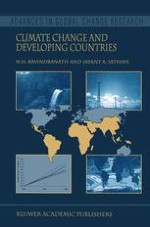2002 | OriginalPaper | Chapter
Climate Change Mitigation
Authors : N. H. Ravindranath, Jayant A. Sathaye
Published in: Climate Change and Developing Countries
Publisher: Springer Netherlands
Included in: Professional Book Archive
Activate our intelligent search to find suitable subject content or patents.
Select sections of text to find matching patents with Artificial Intelligence. powered by
Select sections of text to find additional relevant content using AI-assisted search. powered by
Developing countries have lower per capita income, use less energy per capita and use fuels less efficiently than industrialized countries. This less efficient use of fuels stems from both lack of state-of-the-art technology and proportionally higher use of coal, which produces more CO2 per unit of energy used than petroleum products and natural gas. In addition, developing countries are net emitters of greenhouse gases from the burning of forests for land clearing and the burning of non-renewable biomass for cooking and other uses. The historical contribution of developing countries to global greenhouse gas concentration has been small, but commensurate with their high economic and population growth, their emissions from developing countries are expected to increase rapidly and overtake those from industrialized countries during the early decades of this century (Figure 2.9). As discussed in the earlier chapters, stabilization of greenhouse gas concentrations in the atmosphere at the 550 ppmv (parts per million volume) level will require that these countries begin to reduce their future greenhouse gas emissions by some period between 2040–2060. The exact decade when reductions will need to begin will depend on the global pathway and rate of emissions growth from now until 2100 and beyond.
